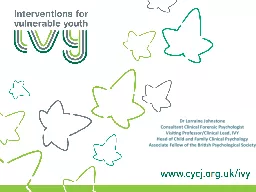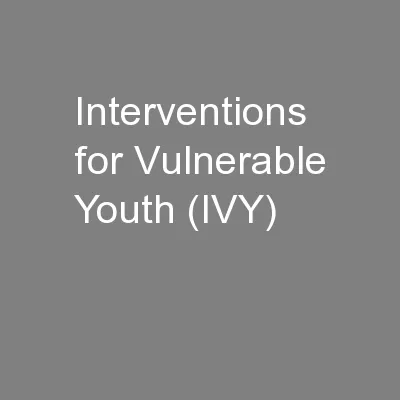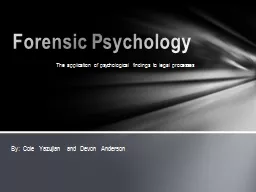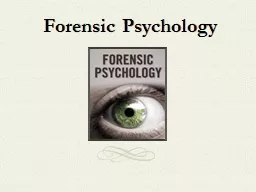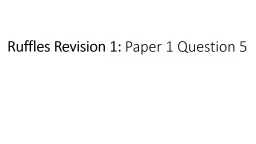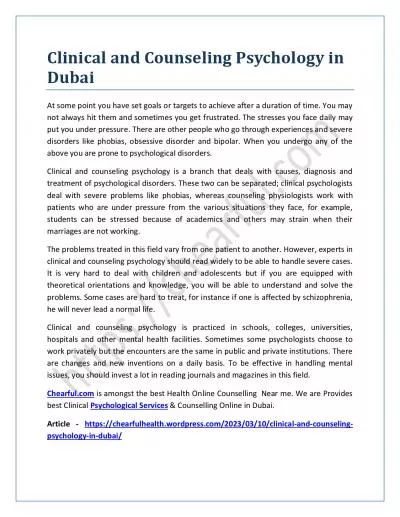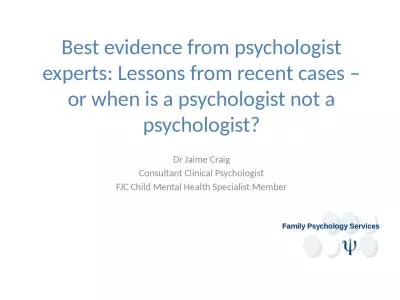PPT-Dr Lorraine Johnstone Consultant Clinical Forensic Psychologist
Author : aaron | Published Date : 2018-02-23
Visiting ProfessorClinical Lead IVY Head of Child and Family Clinical Psychology Associate Fellow of the British Psychological Society Aims and Overview And a picture
Presentation Embed Code
Download Presentation
Download Presentation The PPT/PDF document "Dr Lorraine Johnstone Consultant Clini..." is the property of its rightful owner. Permission is granted to download and print the materials on this website for personal, non-commercial use only, and to display it on your personal computer provided you do not modify the materials and that you retain all copyright notices contained in the materials. By downloading content from our website, you accept the terms of this agreement.
Dr Lorraine Johnstone Consultant Clinical Forensic Psychologist: Transcript
Download Rules Of Document
"Dr Lorraine Johnstone Consultant Clinical Forensic Psychologist"The content belongs to its owner. You may download and print it for personal use, without modification, and keep all copyright notices. By downloading, you agree to these terms.
Related Documents

